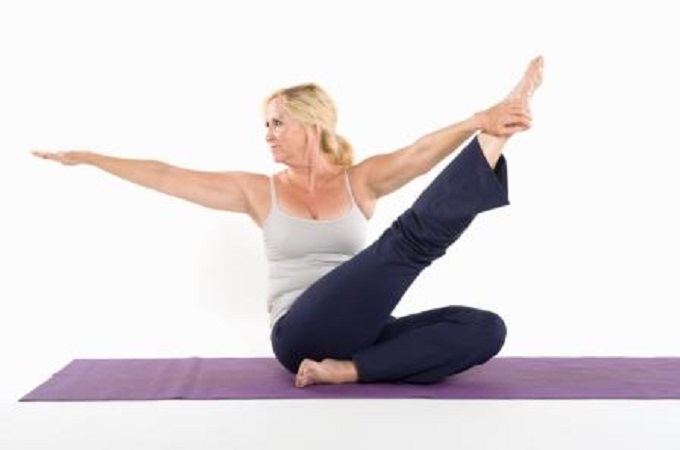What is Hatha Yoga?
Hatha yoga hasn’t changed for thousands of years, but our thinking and perception of it have changed. As you know, in different cultures the same word has a variety of definitions, which shows that language is a very energetic and powerful thing. The same is here. Throughout the evolutionary process of yoga, the same word “Hatha” is considered for different things too. Let’s see hatha yoga sequences for beginners.
In the west, hatha yoga is the balancing of the mind. It has two parts. “Ha” means esoteric sun and “Tha” means the moon. It indicates the sun as a source of energy and the moon as a source of calm and peace. The sun also represents masculinity and the moon’s feminine qualities. So, Hatha is the balance of two entities within us. Masculinity is the strength that comes from a posture, whereas femininity or calm comes from meditation. Workouts in Hatha yoga aim to balance these two energies. Hatha is a set of physical poses and breathing techniques which are practiced very slowly and statically. Literally, “hatha” is a Sanskrit word that means force. So, people consider hatha yoga as the yoga of force, or achieving a state of yoga with the help of force.
The Origin of Hatha Yoga
Ancient Hindu legends give credit for propounding Hatha yoga to Lord Shiva in 1500BC. Historically, Hatha Yoga is described in three texts of Hinduism.
- Hatha Yoga Pradipika by Swatmarama (15th century)
- The Shiva Samhita, whose author is not known (16th century), the
- Gheranda Samhita by Yogi Gheranda (17th century),
Asana or the Modern Hatha Yoga Concept
Hatha yoga is the most common form of yoga in modern times and includes:
- Asana-yoga posture
- Mantra-chanting or reciting
- Pranayama (breathing techniques)
- Cleansing techniques
- Hand gestures
The fame of Hatha yoga is because of the flexibility of the exercise itself, with a variety of poses along with breathing exercises. It is so easy that everyone can do it with little effort. Its primary goal is to achieve long-term and stance stability.
The goal is to gradually transition between various positions, pausing occasionally to give the body a chance to stretch and fill the gap with energy. A guided breathing method that enables the mind to simultaneously “heal” with the body also contributes to this body. A sequence of postures and breathing for some time drains the body of energy, which is then regenerated through a meditation section that allows the body and mind to do so with increased vigor. This calms the conscience and harmonizes the mind and body.
How many Asanas of Hatha Yoga?
From the 10th to the 15th centuries, various forms, asanas, and benefits of Hatha Yoga were noted by many scholars and experts. Of these multitudes of texts, almost 84 are modern-day postures, or asanas, of Hatha yoga. As we know, in the evolutionary process, changes occur, which may be with the loss of things or modification of things. However, as yoga evolved and various variations emerged throughout the next centuries, some of the old asanas were not present in modern times. The good news is that the postures we still have are still beneficial to practice and carry great benefits. The asana practice that you do today may not be all, but still, you are doing the most prominent and beneficial.
Hatha Yoga Sequence for Beginners:
For beginners or newbie, ebb and flow are necessary to reach total relaxation. Warm up your body, gradually increasing the intensity to maximize your energy. After that, slow down to calm your mind and body, but make sure your energy level is still boosted and optimizes your inner potential.
The Particular Sequence:
Hatha yoga starts with a few pranayamas that are easy and relax your body and also stimulate refreshed energy levels. Later on, this energy is used in the next postures of Hatha yoga sequences that are specifically designed for beginners, such as Tadasana, the mountain pose, or Vrikshansana, the tree pose.
You can drain more energy with advanced poses that strengthen your core and physical being while de-stressing your mind. The goal is to exhaust the body’s energy so that the mind can concentrate on a particular task aligned with the environment. Furthermore, your trainee will guide you on each step. He will make you aware of how to inhale the fresh breath from your nose and exhale through your mouth. He will also assist you to get experience in the breathing process and will teach you how in-breath and out-breath enhance your connection with your surroundings.
The breathing journey further leads you to the next stage containing Dhyana, meaning meditation. Meditation is the connection of your physical body with your mind to regain your energy. Each step of this stage focuses on being mindful of your whole body space and healing any vacuum with energy before breathing out and cleansing yourself of impure energy.
Hatha Yoga Poses for Beginners:
Hatha yoga contains many poses, or asanas, that enhance your physical well-being and mental health. These poses have gentle progression and are not hard or challenging. It makes sure oxygen-rich blood flows and elevates your energy level. Don’t give up while going on the next step. Keep it up and your body will gradually become flexible enough to try more complex poses. The most beneficial and prominent poses are the following:
Adho Mukha Svanasana (Svanasana) Pose:
Adho Mukha Svanasana pose is performed by adopting a downward dog pose that helps in building progress from beginner to advanced yoga. It gives you relief from stress and anxiety. It stretches multiple muscles of the body, from the claves to the shoulders. It also supports blood flow and enhances energy levels.
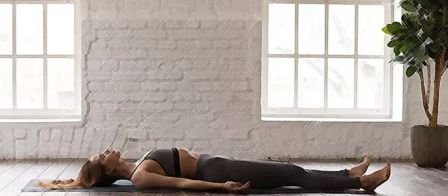
Uttanasana (Forward Bend) Pose:
Uttanasana is a forward-bending pose that allows blood to flow towards the head. It keeps our mind at peace and energized to relieve it from stress. This intermediate level step also boosts the body’s internal organs, the liver and kidney, to function efficiently.
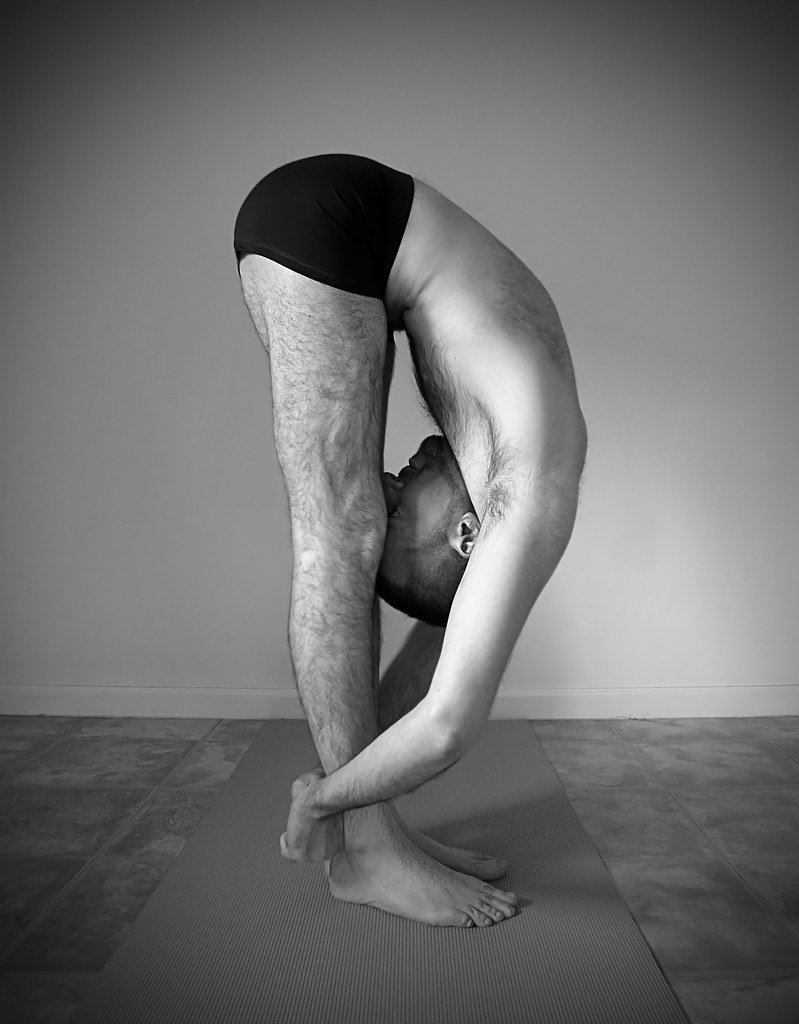
Virabhadrasana (Warrior Pose):
For a beginner, Virabhadrasana (Warrior) pose focuses on correct breathing patterns. It maximizes the level of oxygen in the blood while opening up the lungs and chest to a wide range of possibilities.
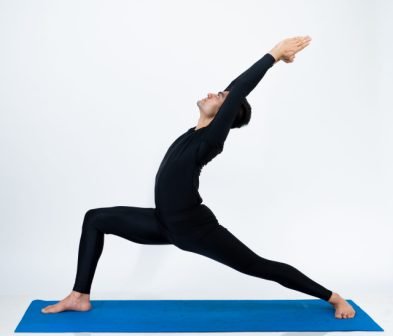
Bhujangasana (Cobra) Pose:
Bhujangasa is a reclining posture. Bhujangasana pose is also called cobra pose, where you raise your head back just like a cobra that is ready to strike. It stretches your spine and is also helpful in reducing your belly fat.
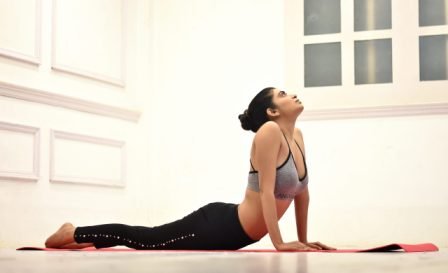
Vrikshasana (Tree Pose):
One of the most common poses is vrikshasana, or tree pose. It is a very basic posture that is done by rooting your body on one foot like a tree. The position of the arms allows stretching of the shoulders and chest for breathing. It also strengthens the core, tendons, and ligaments.
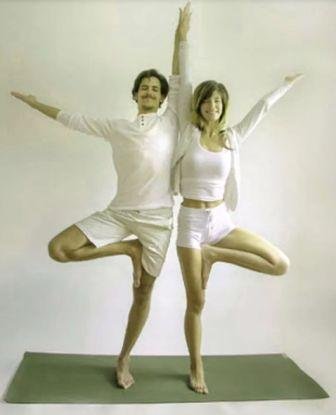
Why Are These Sequences Beneficial?
Completing the Hatha yoga sequence will provide you with numerous benefits:
- Get relief from anxiety and stress.
- Better resilience
- Improve your emotional health.
- Stress reduction through improved sleep and inner calm
- Ache and pain relief in joints
- Boost your energy level.
Hatha Yoga vs. Ashtanga Yoga
If you are new in this field and curious to practice yoga, a Hatha yoga sequence can be preferential for you instead of Ashtanga yoga. Hatha yoga is about physical postures that eventually lead you toward meditation practice, whereas Ashtanga yoga focuses on personal transformation and then moves to physical poses and meditation.
Hatha Yoga Advantages:
Hatha yoga is a seven-fold yoga that will tone your muscles physically and, at the same time, will strengthen your mind. It also helps you to balance your body, calm your mind, cleanse your body, liberate yourself and find inner calm. These are all the cornerstones of every yoga practice.
The Advantages of Ashtanga Yoga:
Asthanga yoga pays heed to self-improvement before moving to physical transformation. Ashtanga yoga, also called “eight limbs” yoga, serves as a perception for combining discipline and ethics in your life. Its focus is on ethically changing yourself and the other things that also change gradually along this path.
Which One to Select?
If you are confused about choosing between these two yoga practices then First, know the capacity, balance, and physical status of your body and mind, then go to attend classes for both. The type of yoga that will be comfortable and easy to do while practicing will remain safe and perfect for you. Keep in mind that yoga is not your final destination, but it will be the start of your journey.
Conclusion:
For those who are seeking yoga sequences for beginners, you must keep in mind the following things. First of all, everyone can begin this journey of righteousness and self-awareness, regardless of religion, caste, race, belief, nation, or sex. Hatah yoga goes beyond physical exercise. Its aim is not to achieve only physical benefits for the body, such as healing and longevity. You can also get the deliverance of mind and spirit.

